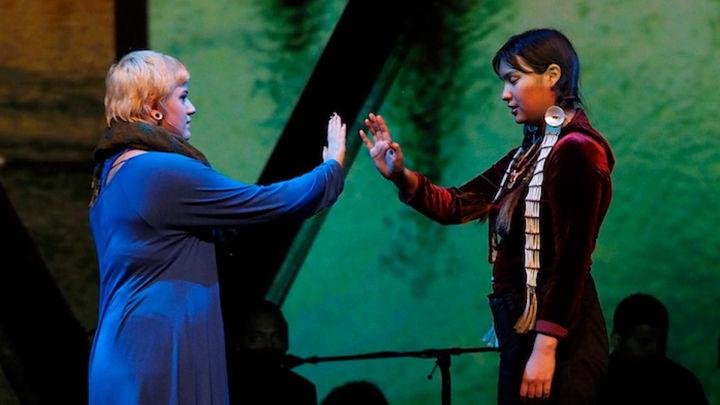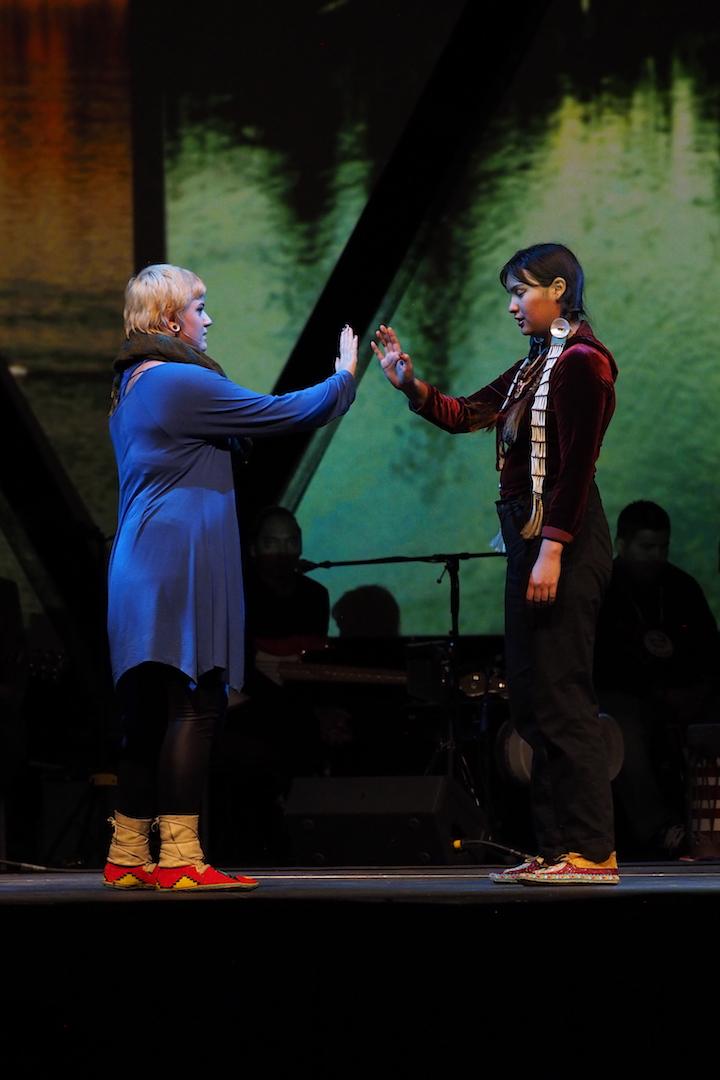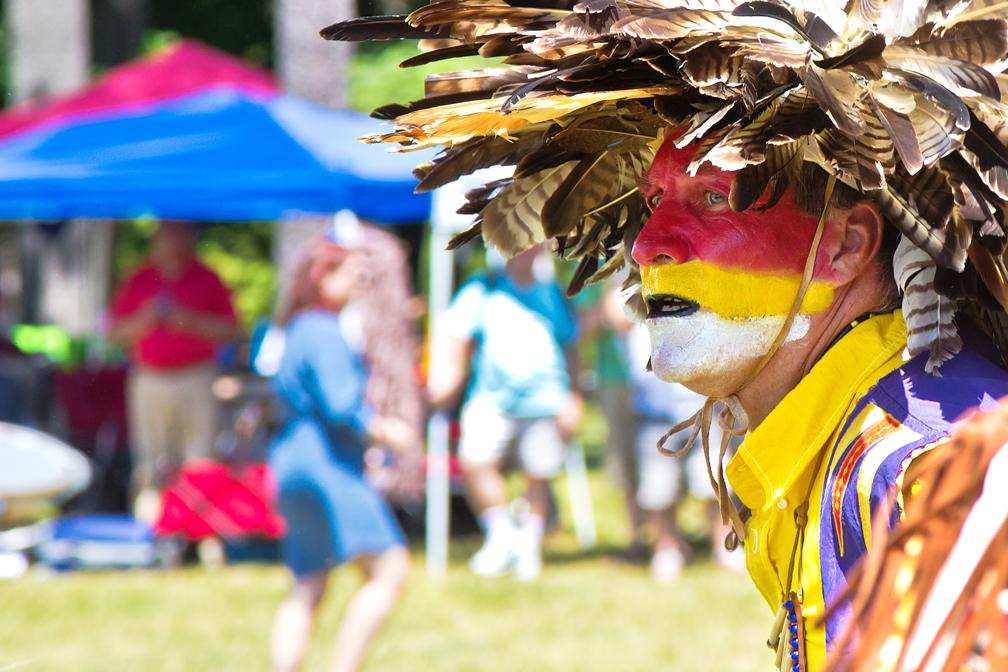
NAC Canada Scene Preview: Making Treaty 7
 Ottawa Life’s Festival City Series is back! We'll provide a unique look at some of your favourite events.
Ottawa Life’s Festival City Series is back! We'll provide a unique look at some of your favourite events.
We’ll go beyond the music with artist interviews, volunteer profiles, concert reviews and spotlights on
the tastes, sights and sounds of the festival season.
Your city! Your festivals and events!
Like a good sunscreen, Ottawa Life has you covered.
Photo by Bert Crowfoot
In celebration of Canada's 150th birthday, the NAC Canada is offering a stirring performance that offers deep insights into how our land came to be. Making Treaty 7 is not only about the history of the indigenous people but is all our history. It is how good intentions can bestow tragic consequences for generations because of misunderstandings. And perhaps by appreciating this history we can move to a better future as a society.
I have been reading the history of pirates and outlaws in Canada. It has struck me how much obscurity in history there has been. Because generations have passed the real events have been altered to the benefit of the storyteller. Treaty 7 is another one of those Canadian history events that need to be seen in its original light and its consequences explored.
 Treaty 7 is the last of the Numbered Treaties made between the Government of Canada and the Plains First Nations. It was signed on 22 September 1877 by five First Nations: the Siksika (Blackfoot), Kainai (Blood), Piikani (Peigan), Stoney-Nakoda, and Tsuut’ina (Sarcee). It comprised of land surrounding Calgary, AB – with the Rockies to the west, US border to the south, Red Deer to the north and Medicine Hat to the east.
Treaty 7 is the last of the Numbered Treaties made between the Government of Canada and the Plains First Nations. It was signed on 22 September 1877 by five First Nations: the Siksika (Blackfoot), Kainai (Blood), Piikani (Peigan), Stoney-Nakoda, and Tsuut’ina (Sarcee). It comprised of land surrounding Calgary, AB – with the Rockies to the west, US border to the south, Red Deer to the north and Medicine Hat to the east.
Today we understand that the Indigenous nations involved in the treaty never realized they were surrendering their land, and that none would have agreed to it had they understood the implications. In the end, the treaty did not have the effect desired: Cree and Métis hunters continued to trespass, the buffalo disappeared and settlers continued to arrive. The promised support for transition to an agricultural lifestyle did not materialize. Two years after signing the treaty, a local Catholic priest who had encouraged the nations to sign a treaty described in a letter their extreme poverty: “I have never seen them so depressed as they are now; I have never seen them before in want of food… They have suffered fearfully from hunger.” He went on to argue that, as to the question of whether the Treaty 7 nations understood “the real nature of the treaty” — land surrender — “my answer to this question is unhesitatingly negative.”
Treaty 7 was intended to define how two very different cultures might agree to coexist. Today, to most people, Treaty 7 is an obscure, misunderstood historical artifact. This misunderstanding led, in turn, to false assumptions, confrontation and distrust. A greater understanding of what Treaty 7 means, to each and every one of us, is beneficial to anyone who wishes for a better understanding of our Canada.
Co-Director Michelle Thrush explains that the performance was planned as a contribution to the Calgary 2012 Festival. It was conceived as a theatrical performance that would explore the relationship with the land and the indigenous perspective of what Treaty 7 meant.
Performers from both indigenous and settler voices were brought in. Elders from the Treaty 7 territory were invited to share their stories with the artists. Their words were used in the creation of the piece.
The performance is not a linear journey but an expression of various moment prior, during, after and present day that relate to the Treaty. Every story has been contributed by the artists. Thrush is excited by the personal creations each artist brings to the show and for the female content to recognize the women's role in our society's.
The show is constantly evolving every year. Each year the company brings in new senior and younger artists to contribute. Thrush says it is part of their mandate and vision to bring in young indigenous artists and nurture their talent. Every artist in Making Treaty 7 has the ability to change up their contributions as they feel and every year the focus evolves and shifts as the fibre of the land with political and indigenous voices change. This keeps the show fresh and relevant.
“I am really hoping that our show will inspire others to explore their own stories of their lands through the guidance of the local elders and traditional knowledge keepers,” states Thrush. It is hoped this show inspires reconciliation among all treaty peoples and to build bridges of understanding across cultures and generations. “After all,” as asserted in the show, “we are all Treaty people.”
Making Treat 7 appears at the National Arts Centre for one show, June 20, 2017 at 7:30pm








